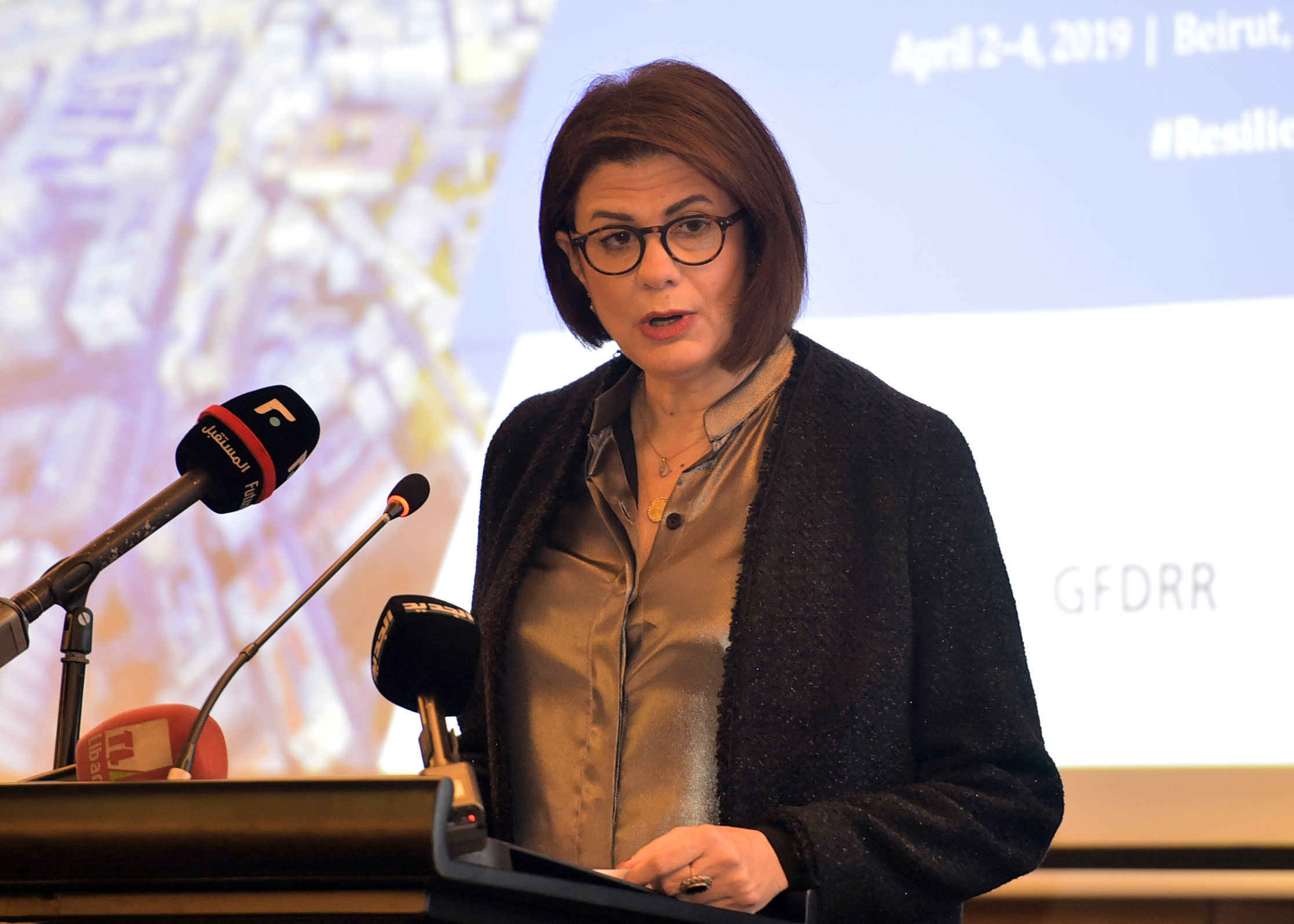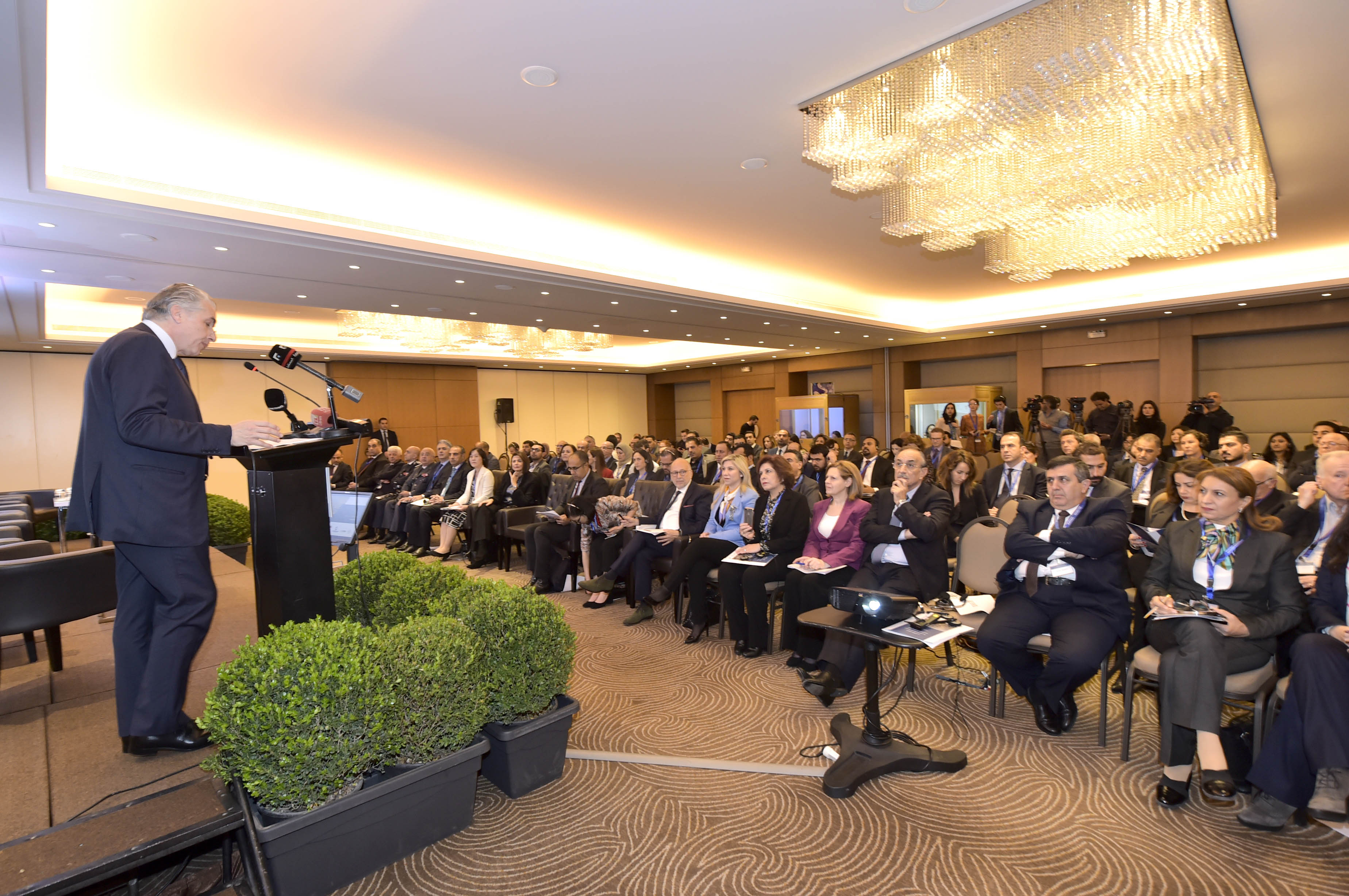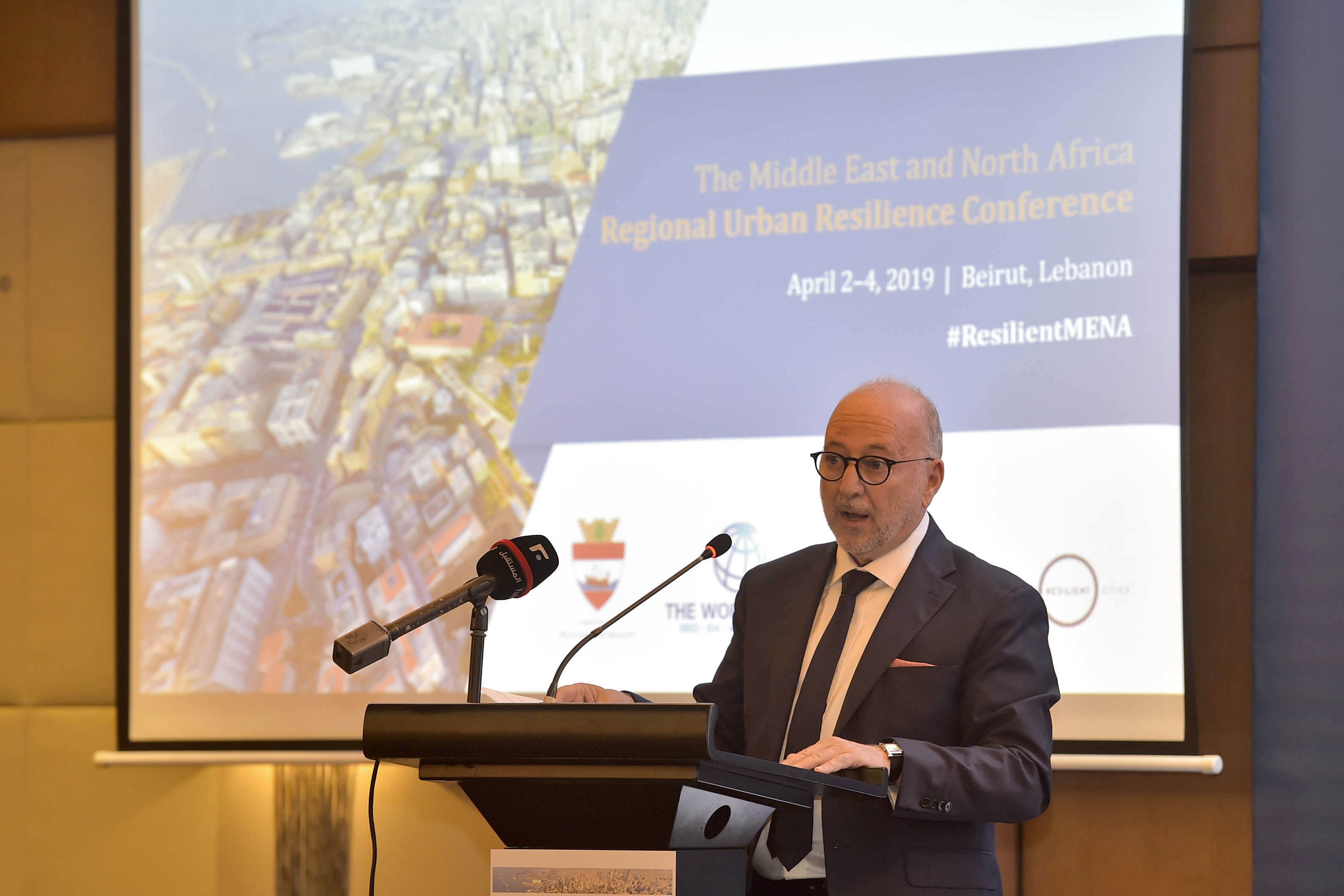Session Summary
Resilience was framed as a key element when planning for urban growth and regeneration, with clear reference to the MENA region, given its high rate of urbanization. This situation exposes urban dwellers to natural hazards which are compounded by climate change and environmental degradation. Speakers noted that MENA cities are also stressed by population density, water scarcity, migration and political instability, and urgently need to build resilience and strengthen urban governance.
The keynote speaker, Prof. Jamal Saghir, suggested the following pathways to accomplishing this aspiration:
- Index and standardize understanding of urban resilience
- Market resilience as an investment criterion to attract finance
- Guide investment and governance decisions with resilience indices
- Support spatial and infrastructural plans to mitigate hazards and maintain city services
- Pursue accountable local-level policies and budgets
Implementing urban resilience solutions was described as a contextual, collaborative and iterative process requiring an integrated approach; notable in all situations is the inability of Governments to effect resilience alone, and a need for private sector and civil society input.






